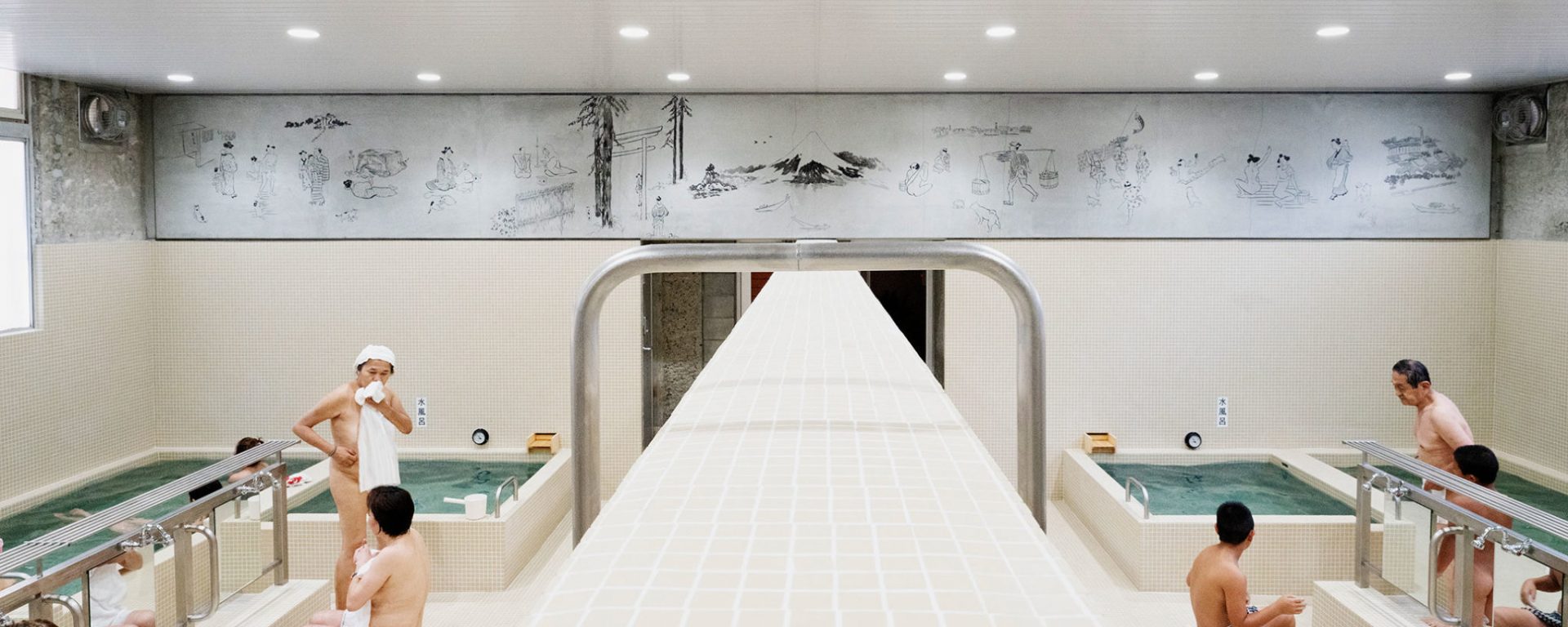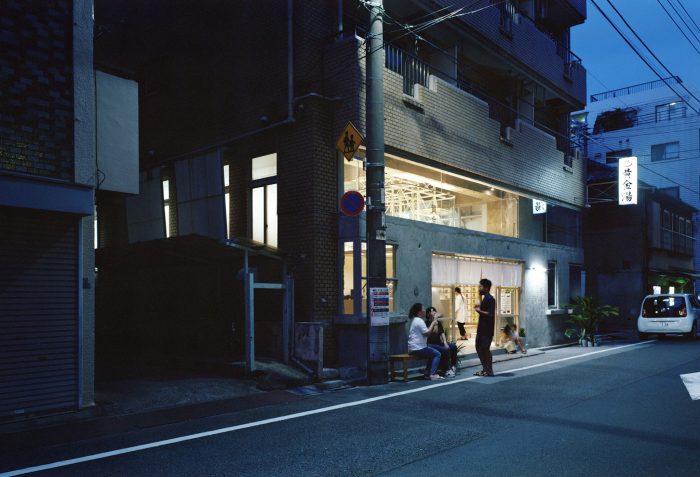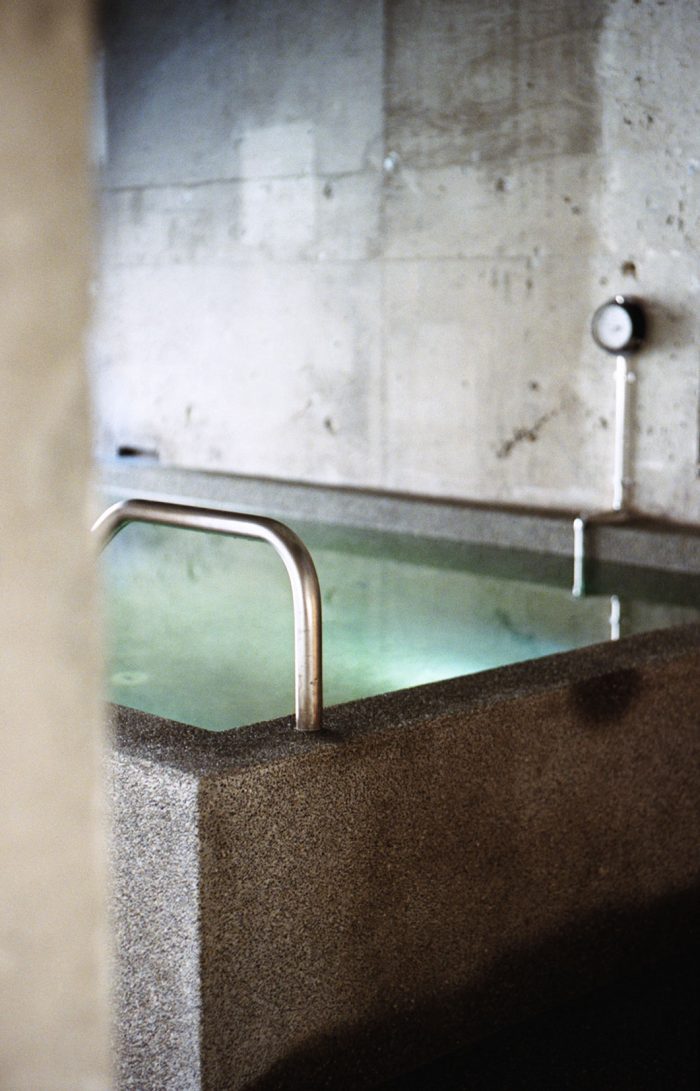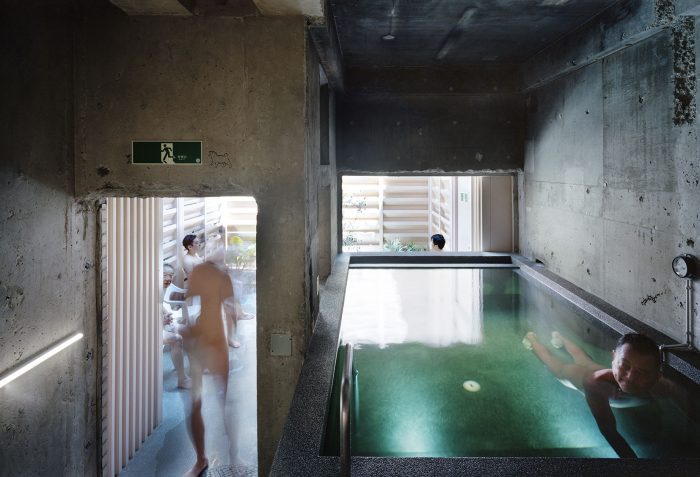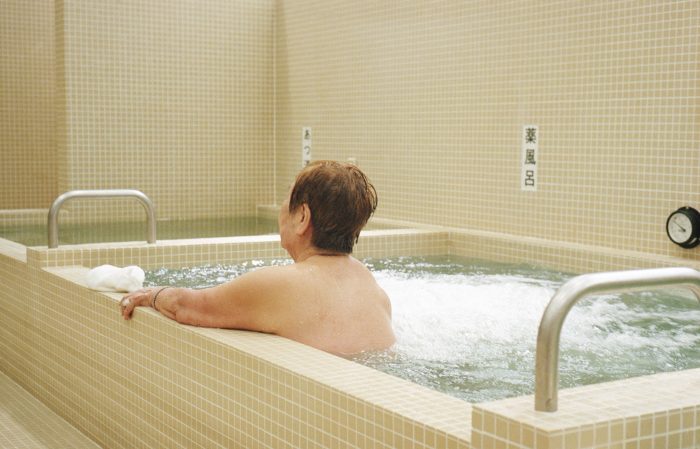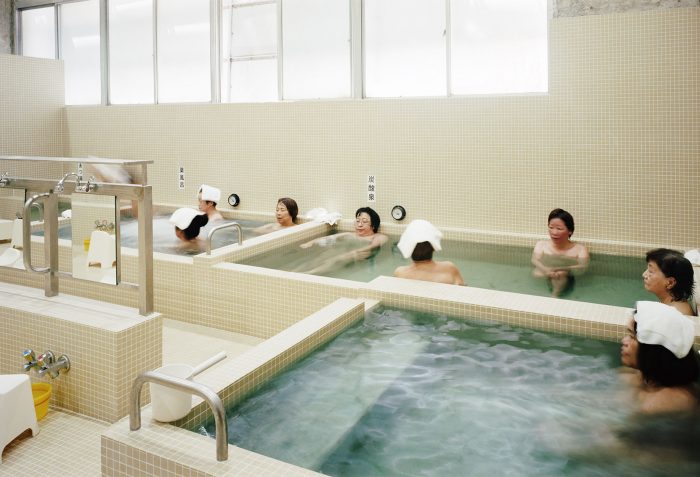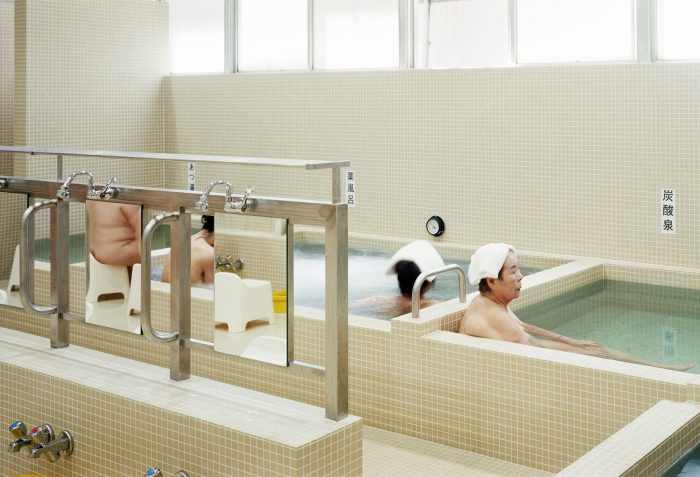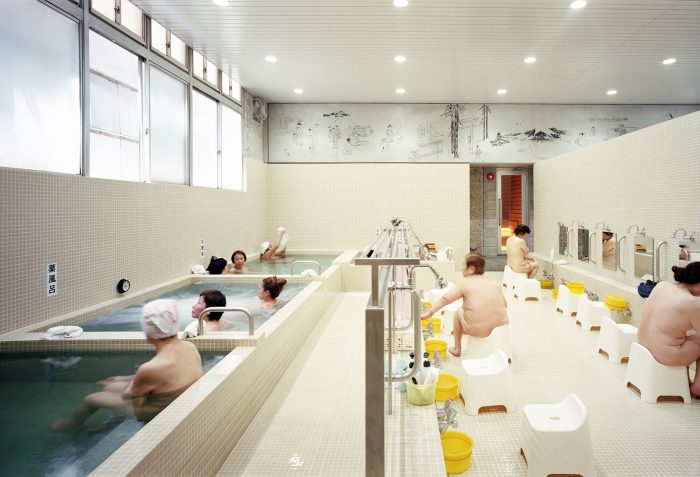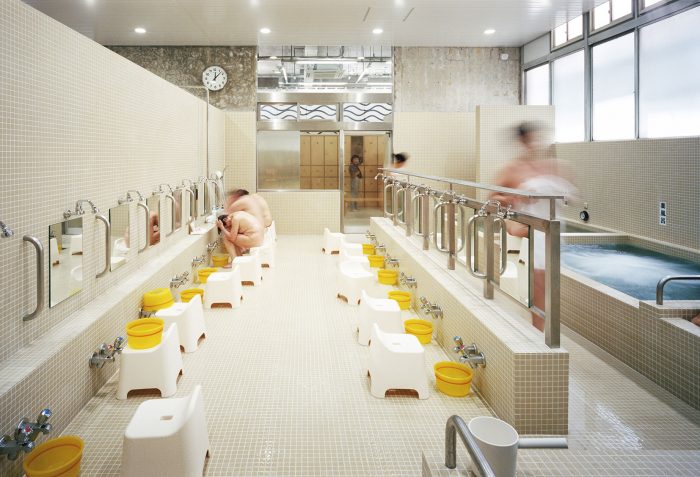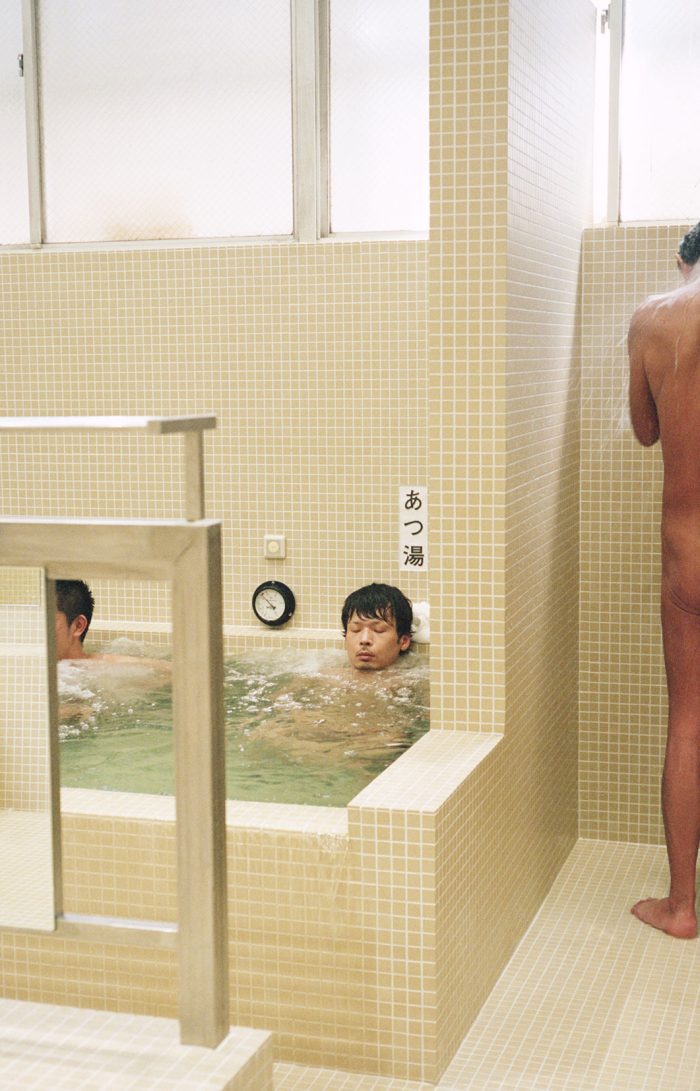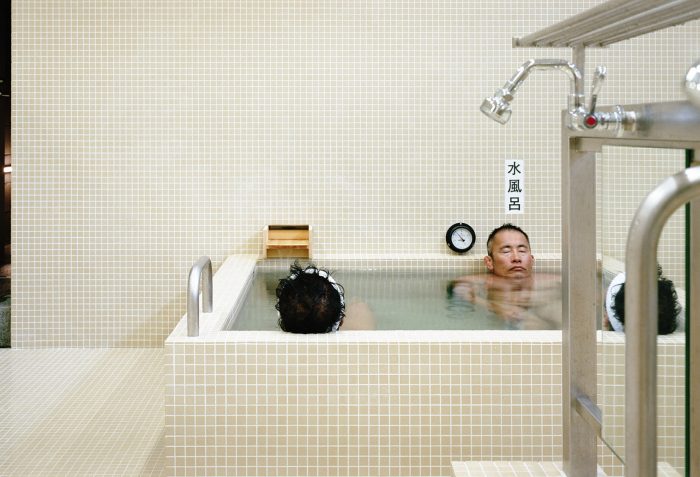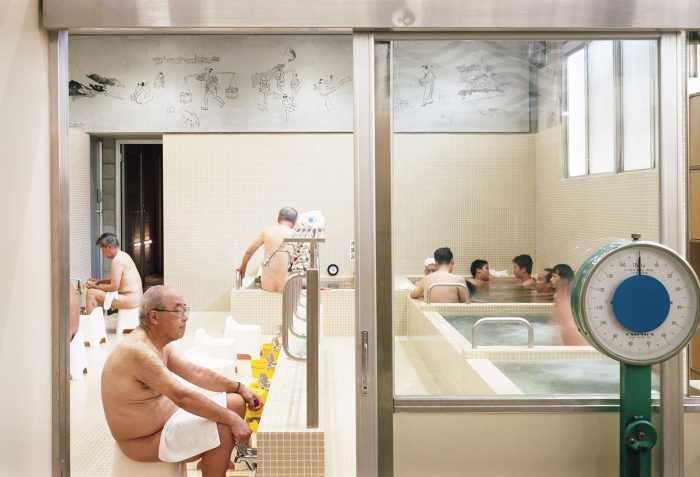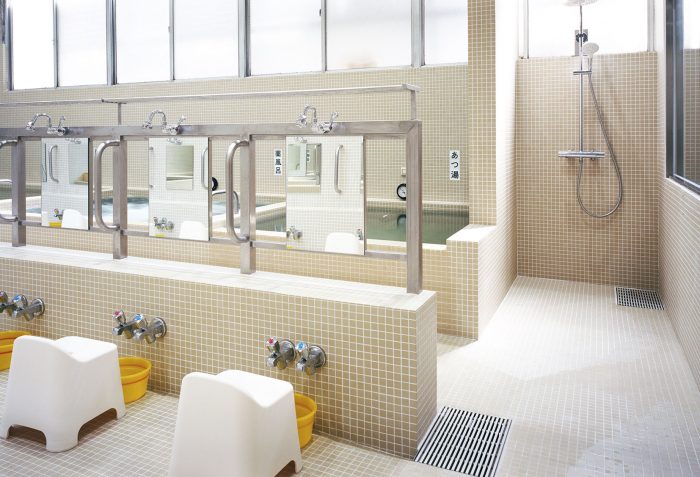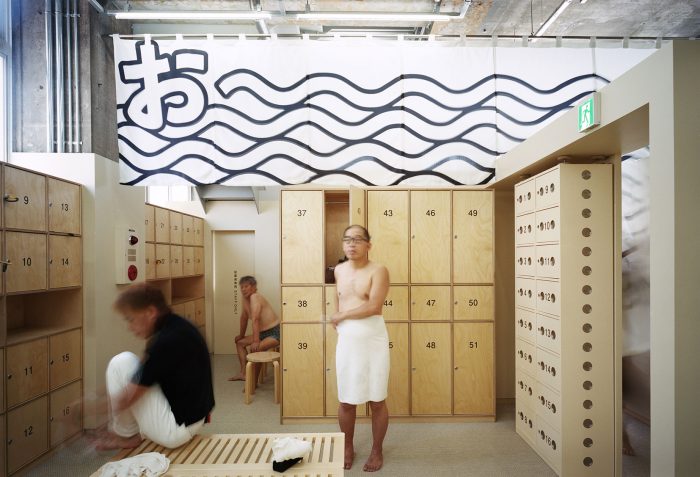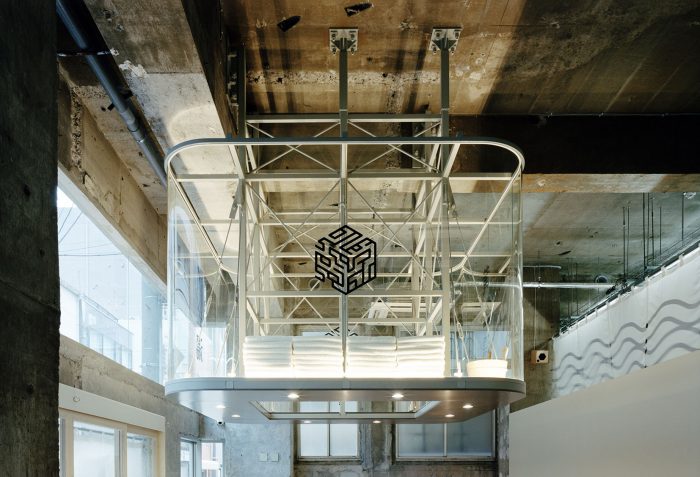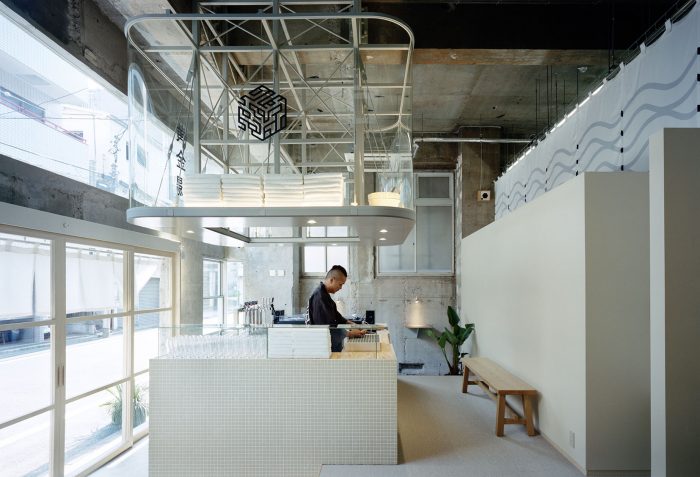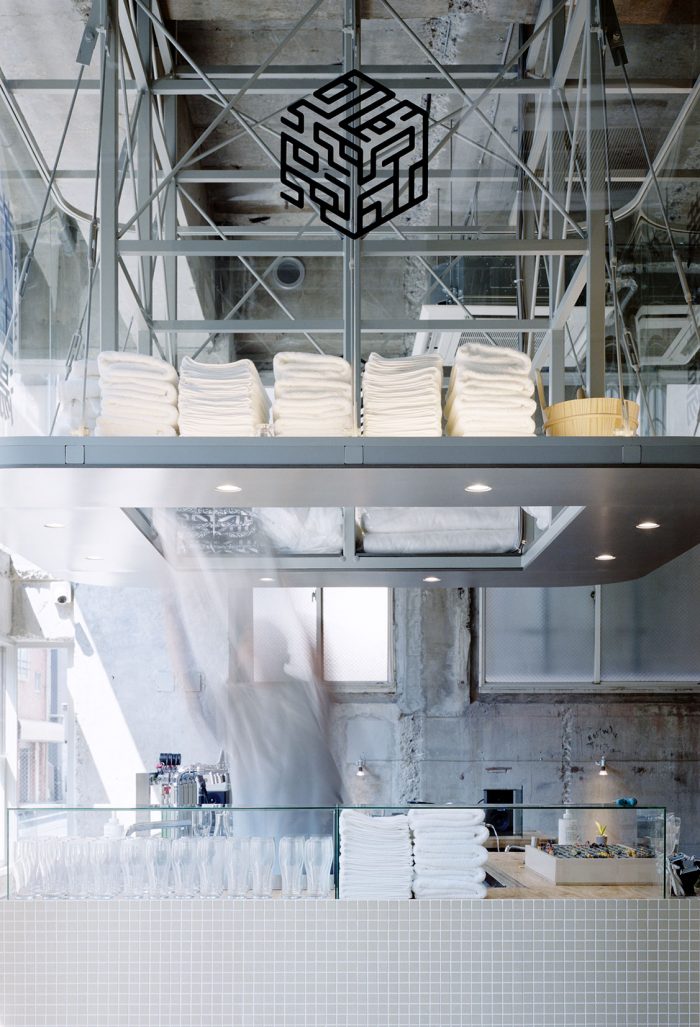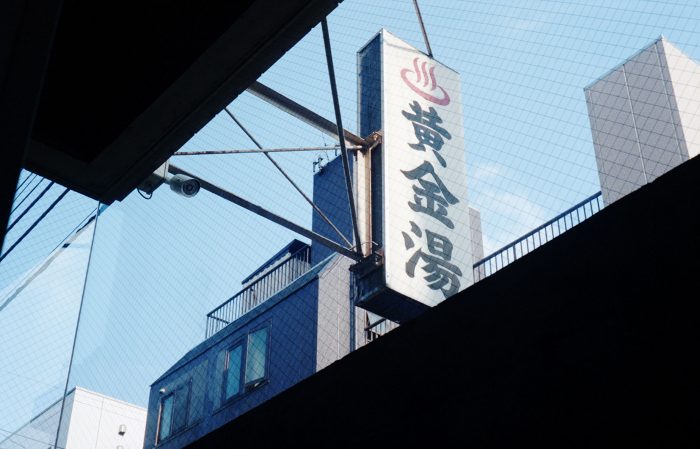作为维系地方社区的场所,澡堂一直受到人们的爱戴,如今浴室的拥有率超过95%,虽然有很多忠实的粉丝,但实际的顾客却减少,关门的澡堂不断。其中,这一黄金汤特意选择了翻修来决胜负,让我们在设计上帮忙。
因此,首先为了担负连接现代社会的作用,将既存的浴池直接按原来的大小不再使用的焚烧场、库存、机械室等有限的场所再利用,啤酒和桑拿浴+外气浴的添加新的功能,年轻情侣或地区聚集的同伴们回来等工作场所设定的。
Sento, or Japanese public bathhouses, have been a long-time favorite communal gathering place where people feel a sense of connection to their communities. Now that 95% of households in Japan own private bathrooms, many sento have been forced to close due to a shrinking customer base, even though there are a certain number of long-time fans. In such a situation, Koganeyu boldly decided to renovate the existing bathhouse and ventured into a new era, and we were commissioned to undertake the renovation.
Our idea was to firstly maintain Koganeyu’s role in connecting people and their community by keeping new bath areas the same size as the existing ones, and transform the remaining areas into a gathering place for young couples and various groups in the community by reusing unused spaces including a boiler room, storage, and machine room, and adding new functions including a beer bar, sauna and air bath.
在设计方面,日本全国任何一家澡堂都着眼于共同的男女之间敞开的界限墙。从建筑的构造上来看,当然应该是天花板都有墙壁才比较稳定,做起来也比较轻松,但是为什么那里现在还开着呢?的疑问。一定是,家人分开进入的时候也能互相打招呼很方便,互相有身临其境的感觉就好了。也许是这样的理由,但现在还不能限定。因此,我们决定以2250mm的高度为契机进行设计,首先在高度上下切换素材。接近皮肤的2250mm以下尽量统一为肤色素材,2250mm以上则由骨架混凝土和与之匹配的素材构成。此外,还请艺术家制作了以“思念”为主题的跨界作品。
在澡堂特有的富士山壁画上,星野佳子女士请我帮忙,画了一幅超越男女界限,表现一个故事的长长的画卷般的富士山画。而且那幅画从男女各自的地方看不出彼此完整。
In terms of design, we paid attention to the separating wall between men’s and women’s bath areas, which does not reach the ceiling and leaves an opening between the top of the wall and the ceiling. This is actually one of the most common characteristics one would see in sento all over Japan. Needless to say, it would be structurally more stable and easier to build a separating wall that reaches the ceiling. But why do they still want to keep it open at the top? Perhaps because it is convenient for families––male family members and female family members can call out to each other to check if they are ready to get out. Or, perhaps because they want to feel each other’s presence on the other side of the wall. It’s hard to say. To begin with, we decided to use the wall height line at 2250mm above floor level as a reference axis for our design and placed different materials above and below the axis. Specifically, components below the 2250mm-line are made of materials in light beige representing the human body, and components above the 2250mm-line are made of concrete and other materials that harmonize with the exposed structural frames. Furthermore, we asked artists Yoriko Hoshi and Iichiro Tanaka to create art works that transcend boundaries between males and females under the theme “sending one’s heart to someone.”
We asked Yoriko Hoshi to paint a mural of Mount Fuji spanning the entire width of both bath areas, which is another traditional element of Japanese sento. She painted various scenes of a story transcending boundaries between males and females, set against a backdrop of Mount Fuji in the style of a picture scroll. The mural cannot be seen in its entirety from the men’s and women’s bath areas.
田中伟一郎用暖帘在澡堂里从以前男女间就开始说“喂!”利用这个,让墙的另一边表达“思念”的心情。我们越过那堵墙,做了一个长长的扶手,表现了男女之间虽然看不见,但握着一条扶手相互“思念”。
然后墙壁也没有了,在番台周围,作为其边界的肤色区域从2250毫米降低到吧台的高度1150毫米,作为男女都可以交谈的场所设置了啤酒屋。而且,上面还有玻璃灯笼。希望那盏灯能给客人带来一天结束时的一丝奢侈,让地区变得温暖。
We asked Iichiro Tanaka to design noren (split curtain) installed in men’s and women’s changing rooms. He used an expression “Oi!” (Hey!), which have been exchanged between men and women over the separating wall for a long time, to convey the feeling of sending one’s heart to someone on the other side of the wall.
We made a long handrail going over the wall from one side to the other so that men and women, while they cannot see each other, can hold on to the same handrail and send their hearts to someone on the other side of the wall.
The wall disappears at the bandai (reception counter)area, where the top of the light beige-colored area is lowered from 2250mm to 1150mm above floor level to align with the countertop. A beer bar is installed there as a place for men and women to enjoy good conversations under a glass lantern. We hope that its soft glow will illuminate customers’ little luxury moments and enhance warm-hearted connections in the community.
Architect: Jo Nagasaka / Schemata Architects
Project team: Kotaro Shimada
Produce / Graphic design: TAKAHASHIHIROKO
Structural Consulting: ladderup architects
Number of stories : 6 floors above ground / 1 floor under ground
Total floor area: 1113.34㎡(1F 269.72㎡)
Type of structure: RC
Completion: July, 2020
Opening: August, 2020
Photo:Yurika Kono

